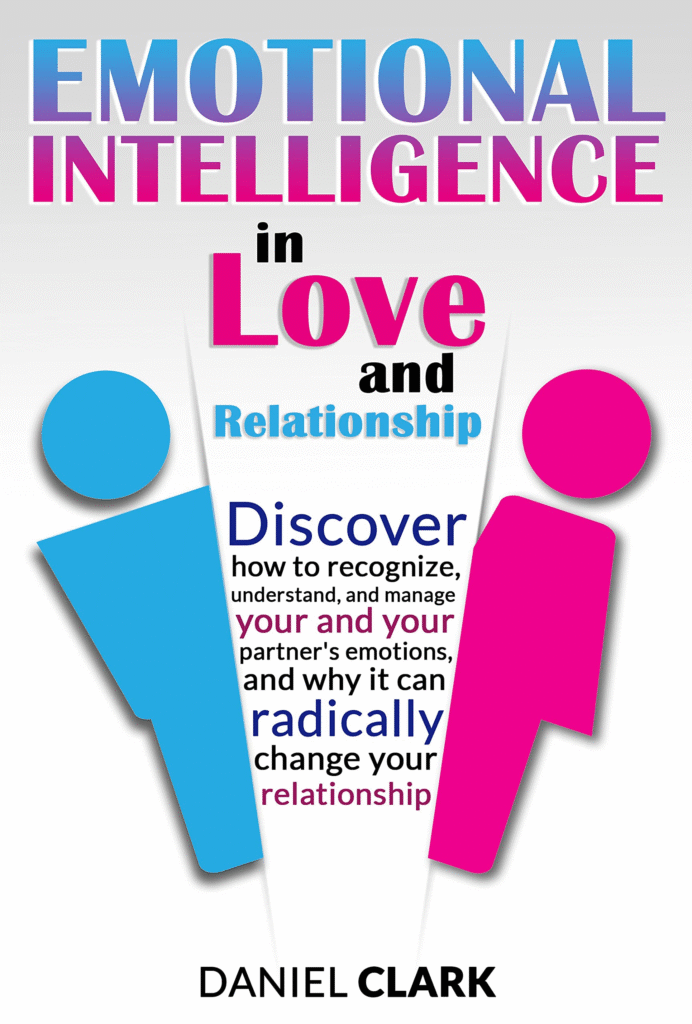Thrive in Love: Essential Relationship Advice for Midlife Men

Thrive in Love: Essential Relationship Advice for Midlife Men
Forge Unbreakable Bonds and Ignite Lasting Love in Midlife
Table of Contents
I. The Modern Man’s Relationship Renaissance

Relationship Advice for Midlife Men
Welcome to a pivotal moment in your life. You’ve navigated career challenges, raised families, and built a life of substance. Yet, for many men over 49, the landscape of relationships can feel like an uncharted territory, fraught with new complexities and unspoken rules. If you find yourself grappling with the dual pressures of caring for aging parents while still supporting your own children, you’re not alone. A staggering 54% of Americans in their 40s are part of the “sandwich generation,” a reality that profoundly impacts personal relationships and emotional well-being [1]. This demographic shift, coupled with the unique challenges of midlife, creates a perfect storm that can strain even the strongest bonds.
This isn’t the world you grew up in. The traditional models of masculinity and relationship dynamics have evolved, leaving many men feeling ill-equipped to navigate the modern emotional landscape. You may be facing a midlife identity shift, questioning your purpose and place in the world, which inevitably spills over into your partnerships. The dating scene, now dominated by apps and algorithms, can feel like a foreign language. And the emotional intelligence that is now a cornerstone of healthy relationships may not have been part of your upbringing or social conditioning.
But here’s the empowering truth: this is not a crisis, but a renaissance. It’s an opportunity to shed outdated beliefs, develop new skills, and forge relationships that are deeper, more fulfilling, and more resilient than ever before. This comprehensive guide is your roadmap to relationship mastery in midlife. We will move beyond superficial advice and provide you with advanced, actionable strategies to:
•Master the art of communication and conflict resolution, equipping you with the tools to navigate difficult conversations with grace and empathy.
•Conquer the modern dating landscape after 49, from crafting a compelling online profile to building genuine connections that last.
•Develop profound emotional intelligence and empathy, breaking free from traditional male conditioning to foster deeper intimacy.
•Navigate complex family dynamics with confidence, managing the pressures of the sandwich generation and blended families.
•Build unbreakable bonds in your existing relationships, rekindling passion and purpose with your long-term partner.
This is your moment to become the modern man who not only understands the complexities of love and connection but masters them. Let’s begin this transformative journey together.
References
[1] Pew Research Center. (2022, April 8). More than half of Americans in their 40s are ‘sandwiched’ between an aging parent and their own children. https://www.pewresearch.org/short-reads/2022/04/08/more-than-half-of-americans-in-their-40s-are-sandwiched-between-an-aging-parent-and-their-own-children/II. Understanding the Midlife Relationship Landscape
Before diving into specific strategies, it’s crucial to understand the unique terrain you’re navigating. The midlife relationship landscape is shaped by a confluence of psychological, social, and cultural factors that are distinct to this stage of life. By grasping these underlying dynamics, you can approach your relationships with greater awareness, empathy, and effectiveness.
A. The Psychology of Men at Midlife
For many men, midlife is a period of profound introspection and re-evaluation. The career goals that once drove you may now feel less fulfilling, and the identity you’ve carefully constructed over decades may start to feel constricting. This is not a sign of weakness, but a natural and healthy part of human development. However, without the right tools and understanding, this internal shift can wreak havoc on your relationships.
One of the most significant challenges is the redefinition of masculinity. The stoic, emotionally reserved model of manhood that many of us were raised with is no longer adaptive in modern relationships. Today, emotional expression, vulnerability, and a willingness to engage in deep, meaningful conversations are not just valued, but essential for building strong bonds. This requires a conscious effort to unlearn old patterns and embrace a more expansive and authentic version of yourself.
Furthermore, as men approach the second half of life, there is often a natural shift towards finding deeper meaning and purpose. For many, this meaning is found not in external achievements, but in the quality of their relationships. Being a present and engaged partner, a supportive father, and a reliable friend becomes a primary source of fulfillment. This shift, when embraced, can be a powerful catalyst for relationship growth.
B. The Sandwich Generation Reality

The term “sandwich generation” has become a popular way to describe the experience of being caught between the competing demands of caring for aging parents and supporting one’s own children. As we saw in the introduction, this is the reality for a majority of men in their 40s and 50s. The emotional and practical challenges of this dual role cannot be overstated.
The stress of managing doctor’s appointments, financial concerns, and the emotional toll of watching a parent decline can easily spill over into your primary relationship. You may find yourself with less time, energy, and emotional bandwidth for your partner. This can lead to feelings of resentment, neglect, and disconnection if not addressed proactively.
It’s essential to recognize that you are not alone in this struggle and that there are strategies for navigating these challenges without sacrificing your relationship. Open communication, setting clear boundaries, and asking for support are not signs of failure, but essential tools for survival and thriving during this demanding phase of life.
C. Modern Dating Realities for Men Over 49
If you’re single and re-entering the dating world after a long absence, you’re likely to find that the rules of the game have changed dramatically. The rise of online dating apps and websites has created a new paradigm for meeting people, one that comes with its own set of opportunities and pitfalls.
One of the most significant shifts is the move from a “conquest” to a “connection” mindset. In your 20s and 30s, dating may have been more about the thrill of the chase and the validation of external attraction. In midlife, however, most people are looking for something more substantial: a genuine connection with someone who shares their values, understands their life experience, and is willing to build a future together.
This requires a different approach to dating, one that prioritizes authenticity, vulnerability, and clear communication. It’s no longer about playing games or trying to be someone you’re not. It’s about showing up as your true self, with all your strengths and imperfections, and having the courage to connect with others on a deeper level. This can be a daunting prospect, but it’s also an incredibly rewarding one, leading to relationships that are far more meaningful and lasting than anything you may have experienced in your youth.
III. Advanced Communication Mastery
Communication is the lifeblood of any healthy relationship, yet it is a skill that is rarely taught in a conscious or systematic way. For many men, emotional expression and deep communication can feel like a foreign language, a product of social conditioning that prioritized stoicism over vulnerability. The good news is that communication is a skill that can be learned and mastered at any age. By developing advanced communication skills, you can transform your relationships, fostering deeper connection, intimacy, and understanding.
A. The Foundation: Conscious Communication
Before we delve into specific techniques, it’s important to understand the concept of conscious communication. This is the practice of bringing awareness and intention to your interactions, rather than relying on old, unconscious patterns. It involves listening to understand, not just to respond, and speaking your truth with clarity, kindness, and respect.
For many men, the biggest obstacle to conscious communication is the fear of vulnerability. We are often taught from a young age that expressing emotions is a sign of weakness and that we should always be in control. This can lead to a pattern of emotional suppression, where we bottle up our feelings until they explode in anger or frustration. Conscious communication requires us to unlearn these harmful patterns and embrace vulnerability as a source of strength and connection.
B. The 7 Advanced Communication Skills

Drawing from the work of relationship experts and psychologists, here are seven advanced communication skills that can have a profound impact on your relationships:
1.Presence: In our hyper-distracted world, the simple act of being fully present with your partner is a radical act of love. This means putting away your phone, turning off the TV, and giving your partner your undivided attention. When you are truly present, you create a space of emotional safety where your partner feels seen, heard, and valued. This can be incredibly healing, especially if your partner has experienced a lack of attention or presence in their past.
2.Verbal Mirroring: This is a powerful technique for demonstrating deep listening and understanding. It involves repeating back to your partner what you heard them say, in your own words, to ensure that you have understood them correctly. For example, you might say, “What I’m hearing you say is that you’re feeling overwhelmed with work and need more support from me at home. Is that right?” This simple act of mirroring can prevent countless misunderstandings and help your partner feel truly heard.
3.Validation: Validation is the act of acknowledging and accepting your partner’s feelings, even if you don’t agree with them. It’s about saying, “I understand why you feel that way,” or “It makes sense that you’re upset.” Validation does not mean that you have to agree with your partner’s perspective, but it does mean that you are willing to see the world from their point of view. This is a crucial skill for de-escalating conflict and building emotional intimacy.
4.Talk About Observable Facts and Direct Feelings: This technique, inspired by the principles of Nonviolent Communication, involves separating your observations from your interpretations. Instead of saying, “You’re always late,” which is an interpretation that is likely to trigger defensiveness, you would say, “I noticed that you arrived 20 minutes after we had agreed to meet. I feel hurt and unimportant when that happens.” By sticking to observable facts and expressing your own feelings, you can communicate your needs without attacking or blaming your partner.
5.”The Story I’m Telling Myself…”: We all tell ourselves stories about our partner’s behavior, especially when we are feeling hurt or insecure. This technique involves taking ownership of your stories and presenting them as interpretations, rather than facts. For example, you might say, “When you don’t respond to my texts for several hours, the story I’m telling myself is that you’re not interested in me anymore.” This allows you to express your feelings without accusing your partner, and it opens the door for a more honest and productive conversation.
6.Emotional Regulation: It’s impossible to have a constructive conversation when you are flooded with emotion. Emotional regulation is the ability to manage your own emotional state so that you can respond to your partner in a calm and rational way. This might involve taking a few deep breaths, going for a walk, or agreeing to take a break from the conversation until you have both calmed down. By learning to regulate your own emotions, you can prevent conflicts from escalating and create a more peaceful and loving relationship.
7.Repair Attempts: According to the Gottman Institute, the most successful couples are not those who don’t fight, but those who are skilled at repairing the connection after a conflict. A repair attempt is any statement or action that is intended to de-escalate the tension and reconnect with your partner. This could be a simple apology, a touch on the arm, or a bit of humor. The key is to be willing to make the first move and to show your partner that you are committed to resolving the conflict and getting back to a place of love and connection.
C. Practical Implementation
Mastering these advanced communication skills takes time and practice. Here are a few tips for integrating them into your daily life:
•Start small: Choose one or two skills to focus on at a time. You might start by practicing presence during your evening conversations, or by using verbal mirroring when your partner is sharing something important with you.
•Be patient with yourself and your partner: You will both make mistakes along the way. The important thing is to keep practicing and to approach the process with a sense of curiosity and compassion.
•Seek professional help if needed: If you are struggling to implement these skills on your own, a couples therapist or a relationship coach can provide you with the guidance and support you need to succeed.
IV. Conflict Resolution: The Gottman Method for Midlife Men
Conflict is an inevitable part of any intimate relationship. However, it is not the presence of conflict that determines the success of a partnership, but rather how that conflict is managed. The groundbreaking research of Dr. John Gottman has revolutionized our understanding of relationship dynamics, providing a science-backed framework for navigating disagreements in a way that strengthens, rather than erodes, the bond between partners. For midlife men who may not have been equipped with the tools for healthy conflict resolution, the Gottman Method offers a clear and effective path forward.
A. The 69% Rule: Managing vs. Solving Problems
One of the most profound findings from the Gottman Institute is that a staggering 69% of relationship problems are perpetual, meaning they are ongoing issues that will likely never be fully resolved. These are the fundamental differences in personality, values, and lifestyle that are inherent in any partnership. The key to a happy relationship is not to eliminate these problems, but to learn how to manage them with humor, respect, and a deep understanding of each other’s perspectives.
This is a radical departure from the traditional male approach to problem-solving, which often involves trying to “fix” everything. When it comes to perpetual problems, this approach is not only ineffective, but it can also be incredibly damaging to the relationship. By constantly trying to change your partner or win them over to your point of view, you are sending the message that they are not good enough as they are. The Gottman Method teaches us to shift our mindset from problem-solving to problem-managing, a subtle but crucial distinction that can make all the difference.
B. The Three Conflict Blueprints

The Gottman Institute has developed three conflict blueprints to help couples navigate their disagreements in a constructive and loving way:
Blueprint #1: Current Conflicts
This blueprint is designed for managing the day-to-day conflicts that arise in any relationship. The key principles are:
•The 15-20 Minute Rule: If a conversation becomes too heated, take a 15-20 minute break to calm down and collect your thoughts. This prevents emotional flooding and allows you to return to the conversation in a more rational and respectful state of mind.
•Softened Start-ups and “I” Statements: Begin the conversation with a soft and gentle tone, using “I” statements to express your feelings and needs without blaming or attacking your partner. For example, instead of saying, “You never help around the house,” you might say, “I feel overwhelmed with all the chores, and I would really appreciate your help.”
•Taking Turns and Active Listening: Only one person should speak at a time, while the other partner listens actively and attentively. This means putting away distractions, making eye contact, and truly trying to understand your partner’s perspective.
Blueprint #2: Attachment Injuries
Attachment injuries are past emotional wounds that have not been fully healed. These can be major betrayals of trust, or smaller, seemingly insignificant events that have left a lasting impact. This blueprint provides a framework for addressing these injuries in a way that promotes healing and forgiveness:
•Recognizing and Addressing Past Triggers: The first step is to identify the past events that are still affecting your relationship. This requires a willingness to be vulnerable and to share your deepest hurts with your partner.
•The Five-Step Healing Process: The Gottman Institute has developed a five-step process for healing attachment injuries: describe your feelings, express your personal reality, explore the underlying triggers, take responsibility for your part in the conflict, and create a plan for moving forward.
•Taking Responsibility Without Losing Yourself: It’s important to take responsibility for your actions, but this does not mean that you have to accept all the blame. The goal is to find a balance between acknowledging your role in the conflict and honoring your own feelings and needs.
Blueprint #3: Gridlock to Dialogue
Gridlock is what happens when a perpetual problem becomes a source of constant conflict and resentment. This blueprint is designed to help couples move from a state of gridlock to a state of dialogue, where they can discuss their differences with mutual respect and understanding:
•Understanding Underlying Dreams and Values: The key to unlocking gridlock is to understand the underlying dreams and values that are driving each partner’s position. This requires a willingness to go beyond the surface-level issue and to explore the deeper meaning that it holds for each of you.
•Finding Compromise Without Compromising Core Needs: Once you understand each other’s dreams, you can begin to find ways to compromise that honor both of your core needs. This may not mean finding a perfect solution, but it does mean finding a way to live with your differences in a way that feels respectful and loving.
•Honoring Differences While Maintaining Connection: The ultimate goal is to create a relationship where you can both be your authentic selves, with all your differences and imperfections, and still feel deeply connected to each other.
C. Advanced Techniques for Men
For men who have been socialized to avoid conflict and suppress their emotions, these techniques can be particularly challenging. Here are a few advanced tips to help you master the Gottman Method:
•Managing Defensive Reactions: When you feel attacked or criticized, it’s natural to become defensive. However, defensiveness is one of the biggest obstacles to effective conflict resolution. The key is to learn to recognize your defensive triggers and to respond with curiosity and empathy, rather than with anger and denial.
•Using Repair Attempts Effectively: A repair attempt is any statement or action that is intended to de-escalate the tension and reconnect with your partner. This could be a simple apology, a touch on the arm, or a bit of humor. The key is to be willing to make the first move and to show your partner that you are committed to resolving the conflict and getting back to a place of love and connection.
•Creating Emotional Safety During Conflict: The most important thing you can do to improve your conflict resolution skills is to create a space of emotional safety where your partner feels comfortable expressing their true feelings without fear of judgment or reprisal. This means listening with an open heart, validating their emotions, and showing them that you are on their side, even when you disagree.
V. Emotional Intelligence Development for Midlife Men
Emotional intelligence (EQ) is the ability to understand and manage your own emotions, and to recognize and influence the emotions of those around you. For many men, particularly those over 49, the concept of emotional intelligence may feel foreign or even uncomfortable. Traditional models of masculinity often discouraged emotional expression, leading to a generation of men who are highly skilled in the realms of logic and reason, but less practiced in the art of emotional connection. However, developing emotional intelligence is not only possible at any age, but it is also one of the most powerful things you can do to improve your relationships and overall well-being.
A. Breaking Through Traditional Male Conditioning
The first step in developing emotional intelligence is to recognize and challenge the traditional male conditioning that may be holding you back. For decades, men were taught to be stoic, to suppress their feelings, and to prioritize strength and control above all else. This has had a profound impact on the emotional lives of men, often leading to a sense of disconnection from themselves and others.
The cost of this emotional avoidance is significant. It can lead to difficulty in forming and maintaining intimate relationships, a higher risk of mental health issues such as depression and anxiety, and a general sense of unfulfillment. The good news is that the brain is incredibly adaptable, a concept known as neuroplasticity. This means that it is never too late to learn new emotional skills and to rewire the neural pathways that have been ingrained over a lifetime.
B. The Four Pillars of Emotional Intelligence

Disclosure: Some of the links in this post are ‘Amazon affiliate links’. This means if you click on the link and purchase the item, I will receive an affiliate commission.
Emotional intelligence can be broken down into four key pillars, as described by psychologist Daniel Goleman:
1.Self-Awareness: This is the ability to recognize and understand your own emotions, as well as your strengths and weaknesses. It involves paying attention to your internal state, and being honest with yourself about what you are feeling and why.
2.Self-Regulation: Once you are aware of your emotions, the next step is to learn how to manage them in a healthy and constructive way. This does not mean suppressing your feelings, but rather responding to them with intention and wisdom, rather than reacting impulsively.
3.Empathy: Empathy is the ability to understand and share the feelings of another person. It involves putting yourself in your partner’s shoes, and trying to see the world from their perspective. Empathy is the foundation of all healthy relationships, and it is a skill that can be developed with practice.
4.Social Skills: This is the ability to use your emotional intelligence to build and maintain healthy relationships. It involves communicating effectively, resolving conflicts constructively, and inspiring and influencing others in a positive way.
C. Practical EQ Development
Developing emotional intelligence is a journey, not a destination. Here are a few practical exercises to help you get started:
•Daily Emotional Check-ins: Take a few moments each day to pause and ask yourself, “What am I feeling right now?” Notice the physical sensations in your body, and try to identify the specific emotions that are present. This simple practice can dramatically increase your self-awareness over time.
•Empathy-Building Exercises: When your partner is sharing something with you, make a conscious effort to listen with the sole purpose of understanding their experience. Try to imagine what it would be like to be in their shoes, and reflect back to them what you are hearing them say. This will not only help you develop your empathy skills, but it will also make your partner feel deeply seen and heard.
•Mindfulness Practices for Emotional Regulation: Mindfulness is the practice of paying attention to the present moment without judgment. This can be a powerful tool for developing emotional regulation, as it allows you to observe your emotions without getting swept away by them. There are many excellent mindfulness apps and resources available to help you get started.
•Reading Emotional Cues in Your Partner: Pay attention to your partner’s non-verbal cues, such as their body language, facial expressions, and tone of voice. These can often provide more information about their emotional state than their words alone. By learning to read these subtle cues, you can become more attuned to your partner’s needs and feelings.
VI. Mastering Modern Dating After 49
For the single man over 49, the modern dating world can feel like a daunting and unfamiliar landscape. The rules have changed, the technology has evolved, and the strategies that may have worked in your youth are likely to fall flat in today’s environment. However, with the right mindset and a clear understanding of the new terrain, you can not only navigate the modern dating scene with confidence, but also find a meaningful and lasting connection.
A. Mindset Shift: From Performance to Authenticity
The single most important shift you can make in your approach to dating after 49 is to move from a mindset of performance to one of authenticity. In your younger years, dating may have been about putting on a show, trying to impress your date with your accomplishments, and playing a carefully orchestrated game of cat and mouse. In midlife, this approach is not only exhausting, but it is also a recipe for disappointment.
At this stage of life, you have a wealth of life experience, wisdom, and self-knowledge to draw upon. These are your greatest assets in the dating world, and they should be embraced, not hidden. The goal is not to be a perfect, polished version of yourself, but to be a real, authentic human being, with all your strengths, vulnerabilities, and quirks. When you have the courage to show up as your true self, you give others the permission to do the same, creating the foundation for a genuine and lasting connection.
B. Online Dating Mastery
Online dating is now the most common way for couples to meet, and for men over 49, it can be an incredibly effective tool for expanding your social circle and meeting like-minded people. However, it also comes with its own set of rules and best practices. Here’s how to master the art of online dating:
Profile Creation:
Your dating profile is your digital first impression, and it’s worth taking the time to get it right. Here are a few key principles to keep in mind:
•Photo Strategy: Your photos are the most important part of your profile. They should be recent, high-quality, and accurately reflect what you look like in real life. Include a mix of headshots, full-body shots, and photos of you engaged in activities that you enjoy. Avoid selfies, group shots where it’s hard to tell who you are, and photos with sunglasses or hats that obscure your face.

Bio Writing: Your bio is your opportunity to tell a story and to give potential partners a glimpse into your personality. Instead of listing a series of adjectives or hobbies, try to paint a picture of who you are and what you’re passionate about. Use humor, be specific, and don’t be afraid to let your unique personality shine through.
•Avoiding Common Clichés and Mistakes: There are a few common mistakes that men over 49 often make in their dating profiles. These include using outdated photos, writing a generic or cliché-ridden bio, and being overly negative or demanding. Avoid these pitfalls by being honest, positive, and specific.
Platform Selection:
There are a plethora of dating apps and websites to choose from, each with its own unique culture and user base. Here are a few of the best options for men over 49:
•OurTime: This is a dating site specifically designed for singles over 50. It’s a great option for those who are looking for a serious relationship with someone in a similar stage of life.
•SilverSingles: Similar to OurTime, SilverSingles is another popular dating site for the 50+ crowd. It uses a personality test to match you with compatible partners, which can be a helpful feature for those who are looking for a more curated experience.
•Match: Match.com is one of the oldest and most well-respected dating sites on the market. It has a large and diverse user base, making it a good option for those who want to cast a wide net.
•eHarmony: eHarmony is another long-standing dating site that is known for its focus on long-term relationships. It uses a comprehensive questionnaire to match you with compatible partners, and it has a high success rate for creating lasting marriages.
Messaging and Connection:
Once you’ve created a compelling profile, the next step is to start reaching out to potential partners. Here are a few tips for making a genuine connection:
•First Message Strategies: Your first message should be personalized, thoughtful, and engaging. Avoid generic compliments or one-word greetings. Instead, reference something specific from their profile that caught your eye, and ask an open-ended question to get the conversation started.
•Moving from Online to Offline Effectively: The goal of online dating is to eventually meet in person. After a few back-and-forth messages, suggest a low-pressure first date, such as coffee or a walk in the park. This will give you the opportunity to see if you have a real-life connection without the pressure of a formal dinner date.
•Building Genuine Connection vs. Surface Attraction: In midlife, it’s important to look beyond surface-level attraction and to focus on building a genuine connection based on shared values, interests, and life goals. This requires a willingness to be vulnerable, to ask deep questions, and to truly listen to your partner’s answers.
C. Meeting People Organically
While online dating is a great tool, it’s not the only way to meet people. Here are a few ideas for expanding your social circle and meeting potential partners in the real world:
•Social Activities and Hobby Groups: Join a club or a class that aligns with your interests, such as a hiking group, a book club, or a cooking class. This is a great way to meet like-minded people in a low-pressure environment.
•Professional Networking with Relationship Potential: Attend industry events, conferences, and workshops. You never know who you might meet, and even if you don’t find a romantic connection, you’ll be expanding your professional network.
•Community Involvement and Volunteer Opportunities: Get involved in a cause that you care about. This is a great way to meet people who share your values, and it’s also a wonderful way to give back to your community.
D. First Date Success
Once you’ve secured a first date, here are a few tips for making it a success:
•Planning Age-Appropriate Dates: A loud, crowded bar may not be the best environment for a first date in your 50s. Instead, opt for a quiet coffee shop, a walk in the park, or a casual dinner where you can actually hear each other talk.
•Conversation Skills for Deeper Connection: The goal of a first date is to get to know each other on a deeper level. Ask open-ended questions, listen attentively, and be willing to share your own stories and experiences.
•Managing Expectations and Building Anticipation: It’s important to go into a first date with an open mind and to manage your expectations. You may not meet the love of your life on the first try, and that’s okay. The goal is to have fun, to meet new people, and to learn more about yourself in the process.
VII. Navigating Complex Family Dynamics
For men in midlife, relationships rarely exist in a vacuum. They are often interwoven with a complex web of family dynamics, including the care of aging parents, relationships with adult children, and the challenges of blended families. Learning to navigate these dynamics with grace and skill is essential for maintaining a healthy and harmonious partnership.
A. The Sandwich Generation Challenge
As we’ve discussed, the “sandwich generation” is a reality for a majority of men in their 40s and 50s. The competing demands of caring for aging parents while still supporting one’s own children can create a significant strain on a marriage or partnership. Here are a few strategies for navigating this challenging terrain:
•Open and Honest Communication: It’s crucial to have open and honest conversations with your partner about the challenges you are facing. Share your feelings of stress, guilt, and overwhelm, and work together to find solutions that honor both of your needs.
•Setting Boundaries Without Guilt: It’s impossible to be everything to everyone. Learning to set clear boundaries with both your parents and your children is not selfish, but essential for your own well-being and the health of your relationship. This may involve saying “no” to certain requests, asking for help from other family members, or delegating tasks to professionals.
•Prioritizing Your Partnership: In the midst of caring for everyone else, it’s easy to let your primary relationship fall to the bottom of the priority list. However, it’s more important than ever to carve out dedicated time for your partner, to nurture your connection, and to remind each other that you are a team.
B. Blended Family Dynamics
For those who are dating or have remarried in midlife, the challenges of blending families can be significant. Here are a few tips for navigating this complex process:
•Dating with Adult Children Considerations: When you have adult children, it’s important to be mindful of their feelings and to introduce a new partner into their lives in a thoughtful and respectful way. Have an open and honest conversation with your children about your new relationship, and give them the time and space they need to adjust.
•Introducing New Partners to Family: When you are ready to introduce your new partner to your family, do so in a low-pressure environment. A casual brunch or a family game night can be a great way to break the ice and to help everyone get to know each other in a relaxed and informal setting.
•Managing Ex-Spouse Relationships Maturely: If you have an ex-spouse, it’s important to maintain a respectful and cooperative relationship, especially if you have children together. Avoid speaking negatively about your ex-spouse in front of your children or your new partner, and work together to create a positive and supportive co-parenting environment.
C. Grandparent Relationships
For many men in midlife, becoming a grandparent is one of life’s greatest joys. However, it can also add a new layer of complexity to your family dynamics. Here are a few tips for balancing your role as a grandparent with your role as a partner:
•Balancing Couple Time with Grandparent Duties: It’s important to be an involved and loving grandparent, but not at the expense of your primary relationship. Work with your partner to find a balance that allows you to enjoy your grandchildren while still prioritizing your time as a couple.
•Using Grandchildren to Strengthen Partnerships: Grandchildren can be a wonderful source of joy and connection for a couple. Plan activities that you can all enjoy together, such as a family vacation, a trip to the park, or a regular Sunday dinner. These shared experiences can create lasting memories and strengthen the bond between you and your partner.
•Creating New Traditions and Memories: As your family grows and evolves, take the opportunity to create new traditions and memories that reflect your unique family culture. This can be a powerful way to build a sense of unity and to create a lasting legacy for generations to come.
VIII. Building Unbreakable Bonds in Existing Relationships
For men in long-term relationships, midlife can be a time of profound reconnection and rediscovery. The children may be grown, the career pressures may have eased, and you may find yourselves with more time and energy to focus on each other. However, it can also be a time when couples drift apart, falling into the comfortable but unfulfilling routine of what is often called the “roommate syndrome.” Building unbreakable bonds in this new chapter of your life requires a conscious and intentional effort to rekindle the flame of intimacy, to grow together through life’s transitions, and to find a new sense of shared purpose.
A. Rekindling Intimacy After Years Together
After decades of marriage, it’s easy for the spark of passion and intimacy to fade. The demands of work, family, and daily life can take their toll, leaving little time or energy for romance. However, it is never too late to rekindle the flame of intimacy and to create a relationship that is more passionate and fulfilling than ever before. Here are a few strategies for doing so:
•Moving Beyond Roommate Syndrome: The first step is to recognize if you have fallen into the roommate syndrome, where you and your partner are living parallel lives, with little emotional or physical connection. This requires an honest and sometimes difficult conversation about the state of your relationship and a shared commitment to making a change.
•Rediscovering Physical and Emotional Intimacy: Intimacy is not just about sex. It’s about a deep emotional connection, a sense of closeness and understanding, and a feeling of being truly seen and known by your partner. Make a conscious effort to reconnect on an emotional level, through deep conversations, shared vulnerability, and acts of kindness and appreciation. This will naturally lead to a more fulfilling and passionate physical relationship.
•Creating New Shared Experiences and Adventures: One of the best ways to rekindle the spark in a long-term relationship is to create new shared experiences and adventures. This could be anything from taking a dance class together, to planning a trip to a new and exotic destination, to simply exploring a new neighborhood in your own city. The key is to break out of your routine and to create new memories together.
B. Growing Together Through Life Transitions
Midlife is a time of significant transition, both for individuals and for couples. Career changes, retirement, and health challenges can all have a profound impact on a relationship. The key to navigating these transitions successfully is to approach them as a team, with a spirit of mutual support and a willingness to grow together.
•Career Changes and Retirement Planning: Whether you are starting a new career, winding down your old one, or planning for retirement, it’s crucial to have open and honest conversations with your partner about your hopes, fears, and dreams for the future. This will allow you to create a shared vision for this new chapter of your life and to support each other through the inevitable challenges and uncertainties.
•Health Challenges and Mutual Support: As we age, health challenges become more common. Whether you or your partner are facing a serious illness or simply the aches and pains of getting older, it’s important to approach these challenges with a spirit of compassion, patience, and mutual support. This is a time to lean on each other, to be a source of comfort and strength, and to remember that you are in this together.
•Maintaining Individual Identity Within Partnership: While it’s important to grow together as a couple, it’s also essential to maintain your own individual identity. This means continuing to pursue your own hobbies, interests, and friendships, and to support your partner in doing the same. A healthy relationship is not one where two people become one, but one where two whole and independent individuals choose to share their lives with each other.
C. The Power of Shared Purpose
One of the most powerful ways to build an unbreakable bond in a long-term relationship is to find a new sense of shared purpose. This is the feeling that you are working together towards something that is bigger than yourselves, and that your lives have meaning and significance beyond your own individual happiness.
•Finding Meaning Together in Midlife: This could involve volunteering for a cause you both care about, starting a new business together, or mentoring younger couples. The key is to find something that you are both passionate about and that allows you to use your unique gifts and talents to make a positive impact on the world.
•Legacy Building as a Couple: As you enter the second half of life, you may begin to think about the legacy you want to leave behind. This is a powerful conversation to have with your partner, as it can help you to clarify your values, to align your goals, and to create a shared vision for the future.
•Supporting Each Other’s Individual Growth: A strong and healthy relationship is one where both partners are committed to their own individual growth and development. This means supporting each other’s dreams, encouraging each other to take risks, and celebrating each other’s successes. When you are both growing and evolving as individuals, you bring a sense of vitality and excitement to the relationship that can keep it strong and vibrant for years to come.
IX. Implementation Guide: Your 90-Day Relationship Transformation
Knowledge is only powerful when it is put into action. This 90-day implementation guide is designed to help you translate the concepts and strategies from this article into tangible changes in your relationships. This is not a rigid or prescriptive plan, but rather a flexible framework that you can adapt to your own unique needs and circumstances.
Days 1-30: Foundation Building
The first 30 days are all about building a strong foundation for your relationship transformation. This involves developing your self-awareness, practicing your communication skills, and setting clear goals for what you want to achieve.
•Communication Skill Practice Schedule: Dedicate at least 15 minutes each day to practicing one of the advanced communication skills from this article. You might start by focusing on presence during your evening conversations, or by using verbal mirroring when your partner is sharing something important with you.
•Emotional Intelligence Development Exercises: Begin a daily practice of emotional check-ins, taking a few moments each day to notice and name your feelings. You can also start a mindfulness practice, using an app like Headspace or Calm to guide you.
•Relationship Assessment and Goal Setting: Take some time to reflect on the current state of your relationship. What are your strengths as a couple? What are your areas for growth? Based on this assessment, set a few clear and specific goals for what you want to achieve in the next 90 days.
Days 31-60: Advanced Techniques
Once you have a strong foundation in place, you can begin to practice some of the more advanced techniques from this article. This involves tackling conflict head-on, optimizing your dating profile (if you are single), and setting clear boundaries with your family.
•Conflict Resolution Practice: The next time a conflict arises, make a conscious effort to apply the principles of the Gottman Method. Take a break if things get too heated, use softened start-ups and “I” statements, and focus on managing the problem, rather than trying to solve it.
•Dating Profile Optimization (if single): If you are single and using online dating, take some time to optimize your profile based on the tips from this article. Ask a friend for feedback, and be willing to experiment with different photos and bio descriptions.
•Family Dynamic Boundary Setting: Identify one or two areas where you need to set clearer boundaries with your family. This could involve saying “no” to a request from your aging parents, or having a conversation with your adult children about your new relationship.
Days 61-90: Integration and Mastery
The final 30 days are all about integrating these new skills and habits into your daily life, and developing a deeper sense of mastery and confidence in your relationships.
•Advanced Empathy Development: Make a conscious effort to practice empathy in all of your interactions. This means listening with the intent to understand, validating the feelings of others, and trying to see the world from their perspective.
•Long-Term Relationship Visioning: Take some time to dream with your partner about your future together. What do you want to create in the next 5, 10, or 20 years? This can be a powerful way to align your goals and to create a shared sense of purpose.
•Creating Sustainable Relationship Habits: By now, you should have a good sense of which skills and practices are most effective for you. The key is to turn these into sustainable habits that will continue to support your relationship for years to come.
X. Conclusion: Your Relationship Legacy
The journey to relationship mastery is not a destination, but a lifelong practice. It is a commitment to continuous growth, to deep self-awareness, and to the courageous and often messy work of loving another human being. The skills and strategies in this article are not a magic bullet, but rather a set of tools to help you navigate the complexities of love and connection with greater wisdom, compassion, and skill.
The impact of this work extends far beyond your own individual happiness. By modeling healthy and loving relationships, you are creating a powerful legacy for your children and grandchildren. You are showing them what it means to be a strong and emotionally intelligent man, and you are giving them the gift of a more loving and connected world.
This is not an easy path, but it is a deeply rewarding one. It requires courage, vulnerability, and a willingness to step outside of your comfort zone. But the rewards are immeasurable: a deeper sense of connection to yourself and others, a more fulfilling and passionate life, and the knowledge that you have created a legacy of love that will endure for generations to come.
Your relationship renaissance begins today. Take the first step.
Reader Engagement & Community Discussion
We want to hear from you! Your experiences and insights are valuable to our community of men navigating relationships in midlife. Share your thoughts on these discussion topics:
Discussion Questions:
1.What has been your biggest relationship challenge since turning 49? Share your experience in the comments below – your story might help another reader facing similar struggles.
2.Which of the 7 advanced communication skills resonates most with you? Tell us about a time when better communication could have changed the outcome of a difficult conversation.
3.For those who’ve tried online dating after 49, what worked and what didn’t? Your practical tips could be invaluable for someone just starting their dating journey.
4.How do you balance caring for aging parents while maintaining your relationship? The sandwich generation faces unique challenges – let’s support each other with practical strategies.
Join the conversation below and help build a supportive community of men committed to relationship mastery in midlife.
Additional Resources for Continued Growth
Recommended Reading:
•”The Seven Principles for Making Marriage Work” by John Gottman
•”Emotional Intelligence 2.0″ by Travis Bradberry
•”Hold Me Tight” by Sue Johnson
•”The Authentic Heart” by John Amodeo
Professional Support:
•Find a Gottman-trained couples therapist in your area
•Consider relationship coaching for personalized guidance
•Join men’s support groups focused on midlife transitions
Online Communities:
•Reddit communities: r/datingoverforty, r/AskMenOver30
•Facebook groups for men in midlife relationships
•Local meetup groups for divorced/widowed men over 50
Take Action Today
Don’t let this article be just another piece of content you consume and forget. Your relationship transformation starts with the first step you take today.
Choose ONE technique from this article and commit to practicing it this week. Whether it’s having a 15-minute conversation with your partner using verbal mirroring, updating your dating profile with authentic photos, or setting a boundary with a family member, small actions lead to significant changes.
What will your first step be? Share your commitment in the comments below and check back in a week to update us on your progress.
Remember: The journey to relationship mastery is not about perfection – it’s about progress, growth, and the courage to keep showing up authentically in your connections with others.








3 Comments